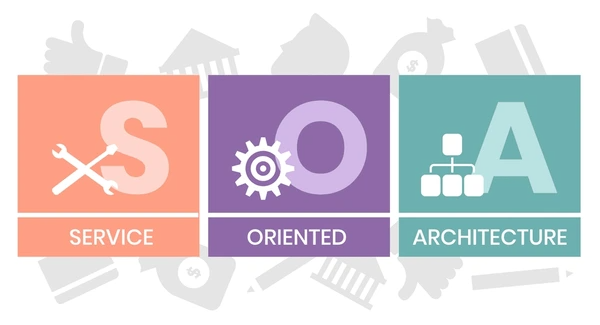
Understanding the SOA Meaning
The SOA meaning, or Service-Oriented Architecture, refers to a software development approach centered on creating reusable services to build applications. These services operate as independent units of functionality, capable of communicating across various platforms and programming languages. By promoting flexibility, scalability, and efficiency, SOA has become a favored strategy for organizations aiming to streamline application development and enhance system integration. This article delves into the SOA meaning, how it works, its benefits, and its significance in modern software design.
Core Components of Service-Oriented Architecture
- 1. Services
Services form the foundation of SOA. Each service is a self-contained unit of software designed to perform a specific task. It has a well-defined interface with input and output parameters and uses a specified communication protocol for interaction. - 2. Service Provider
The service provider creates and delivers the services. It defines the service category, establishes the interface, and ensures critical aspects like security, availability, and performance. - 3. Service Consumer
The service consumer requests and utilizes services provided by the service provider. It interacts with the service through the defined interface without needing to understand the underlying implementation. - 4. Service Repository
The service repository acts as a directory for available services. It helps service consumers discover and access the right services by offering detailed information and categorization.

Principles of Service-Oriented Architecture
- Decomposition into Reusable Services
SOA breaks down software into smaller, reusable services. Each service is self-contained and focuses on a specific task or functionality. - Independent Development and Deployment
Services in SOA are independently developed and deployed. This approach enhances flexibility and allows for easier updates and maintenance. - Loosely Coupled Communication
Services communicate with each other without being tightly dependent. This loose coupling enables seamless integration and collaboration to achieve shared objectives.
Comparison of SOA with Other Architectures
SOA vs. Microservices
SOA and microservices share a common goal of improving application modularity, but they differ in their approach. It operates as a coarse-grained architecture, focusing on integrating larger, reusable services. In contrast, microservices follow a finer-grained approach, emphasizing decentralization and independent components. This makes microservices more scalable and flexible for modern, dynamic environments.
SOA vs. Monolithic Architecture
SOA serves as an evolution of monolithic architecture. In monolithic systems, all components reside within a single container, creating tight coupling and limiting scalability. SOA overcomes this limitation by dividing the container into smaller, independent services. Each service handles a specific function, improving modularity, flexibility, and ease of maintenance.
Benefits of SOA in Software Design and Integration
- 1. Promotes Reusability
SOA encourages reusability by allowing services to be shared across different applications and projects. This reduces redundant development efforts and helps lower overall costs. - 2. Enhances Interoperability
The architecture improves interoperability by enabling systems and applications to communicate seamlessly. This allows them to share data more effectively, enhancing overall operational efficiency. - 3. Provides Flexibility and Scalability
SOA supports flexibility by allowing new applications to be created by combining existing services. This approach also ensures scalability, as the system can grow and adapt without major overhauls. - 4. Supports Continuous Improvement
With SOA, services can be refined and improved over time without disrupting the entire system. This aligns with strategic goals and fosters continuous development.
Implementation and Deployment of SOA
- Using Web Services
Organizations commonly implement SOA through web services, which use standardized internet protocols for seamless communication between services. This approach eliminates the need for manual intervention or code modifications, streamlining interactions across different platforms. - Leveraging an Enterprise Service Bus (ESB)
An enterprise service bus (ESB) plays a vital role in SOA deployments. It acts as a centralized component that facilitates application integration by connecting various services and applications efficiently. The ESB ensures smooth data flow and reduces the complexity of managing multiple service interactions.
Applications of SOA in Enterprise Environments
- Simplifying Enterprise Application Integration (EAI)
SOA plays a crucial role in integrating different applications and systems within an enterprise. By exposing data sources and business functions as services, it enables seamless data flow and process coordination, reducing redundancy and improving efficiency. - Modernizing Legacy Systems
SOA offers a practical solution for upgrading and integrating legacy systems with modern technologies. Refactoring legacy code into services enhances IT infrastructure flexibility and scalability while maximizing existing investments. - Improving Network Monitoring
With its loose coupling and platform independence, SOA is ideal for network monitoring applications. By automating monitoring tasks and sharing critical information, it boosts the efficiency of network management. - Facilitating Mobile Access to ERP Systems
As mobile computing grows, enterprises increasingly integrate mobile devices into their IT ecosystems. SOA simplifies mobile access to ERP systems by providing standardized interfaces for mobile clients to interact with backend services. - Creating Scalable and Flexible IT Architectures
SOA enables enterprises to build flexible IT architectures that adapt quickly to evolving business needs. By breaking applications into discrete services, it optimizes IT spending and improves the ability to respond to market changes.
To get detailed scientific explanations of SOA meaning, try Patsnap Eureka.

